



Hear ye, hear ye! The King Arthur Flour Company hereby declares 2017 the Year of the Bundt. With the introduction of Bundt pans in Minnesota over 70 years ago, Bundt cake is as all-American as apple pie, and much more versatile. From birthdays to anniversaries, job promotions to graduations, we celebrate with cake. And over the course of the next 12 months, we'll share with you some of our favorite Bundt cakes — beginning with this classic lemon Bundt cake.
As the sun rises on a brand new year, we're proud to announce our choice for 2017 Recipe of the Year: Lemon Bliss Cake, a Bundt cake that combines rich flavor and wonderfully moist texture with total ease of preparation. Simplicity itself, this cake is equally at home packed for a picnic or ensconced in the place of honor at an elegant dinner.
While vanilla and chocolate rule American taste buds, lemon is right behind. With its sassy citrus tang and sunny color, lemon is an obvious choice to brighten cold winter days. Next time you're planning a celebration, think of this cake: we guarantee, it'll be the life of the party!
Preheat the oven to 350°F.
Gather your ingredients:
16 tablespoons (227g) unsalted butter, at room temperature, at least 65°F
2 cups (397g) granulated sugar
1 teaspoon salt
4 large eggs, at room temperature
2 teaspoons baking powder
3 cups (360g) King Arthur Unbleached All-Purpose Flour
1 cup (227g) milk, whole milk preferred, at room temperature
finely grated rind of 2 medium lemons or 3/4 teaspoon lemon oil
Want to make this cake gluten-free? Substitute our gluten-free Measure for Measure Flour, 1:1, for the all-purpose flour in the recipe; no other ingredient adjustments are necessary.
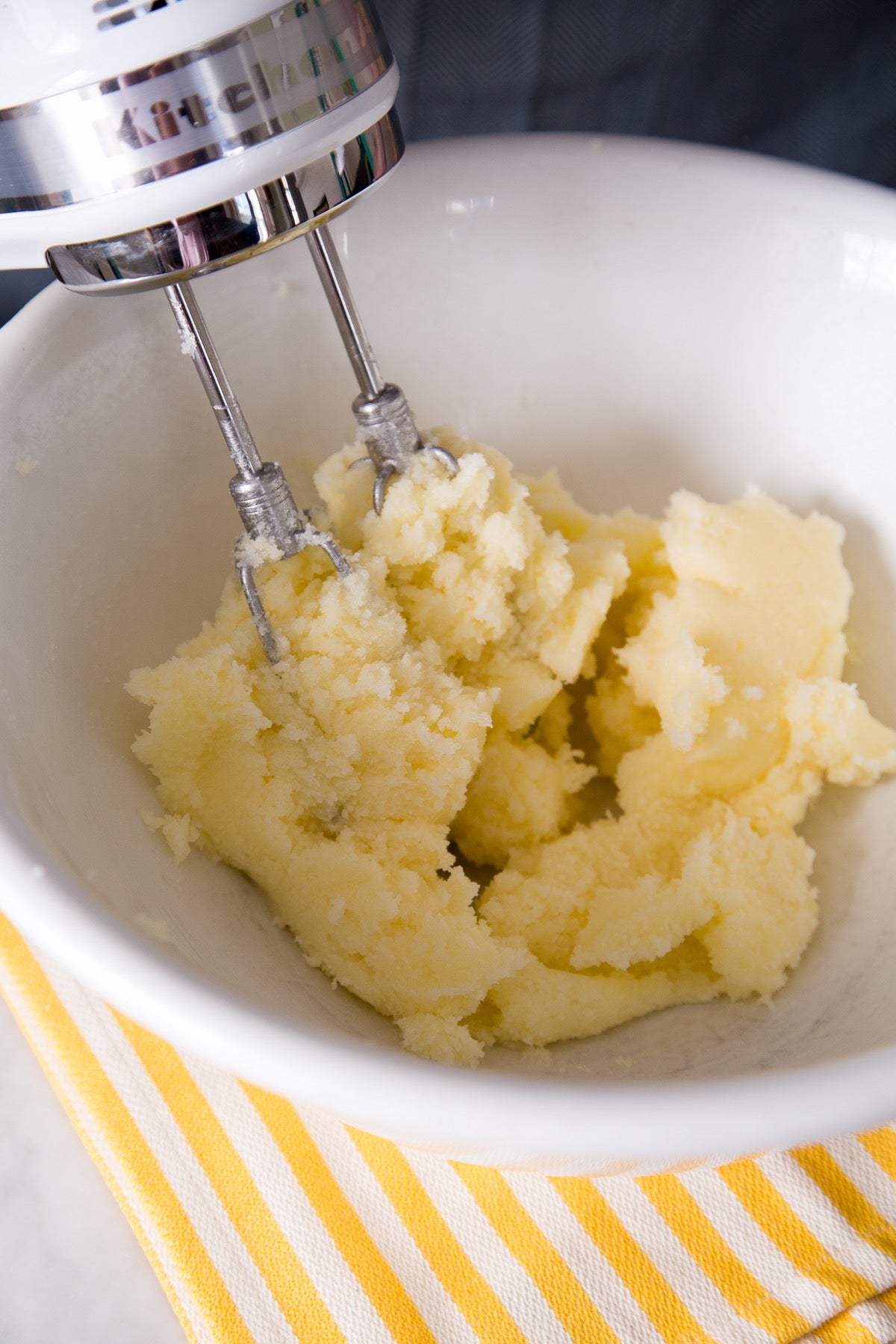
Beat together the butter, sugar, and salt, first until combined, then until fluffy and lightened in color. For a visual of what this process should look like, see our video, how to cream butter and sugar.

Add the eggs one at a time, beating well after each addition. Scrape the sides and bottom of the bowl once all the eggs have been added, and beat briefly to recombine any residue.
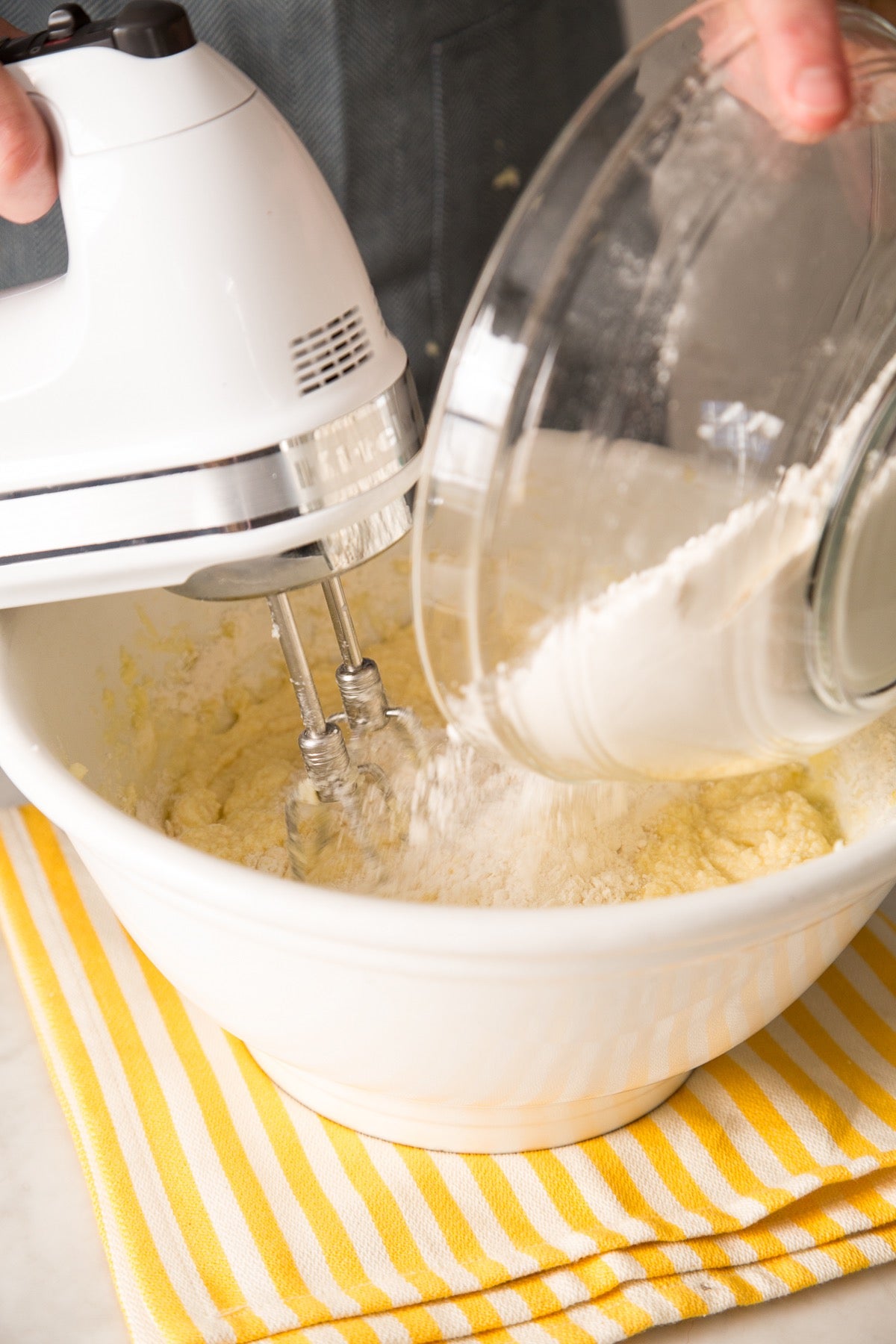
Measure the flour by gently spooning it into a cup, then sweeping off any excess. Whisk the baking powder into the flour. Add the flour mixture to the batter in three parts alternately with the milk, starting and ending with the flour. The batter may look slightly curdled when you add the milk. That's OK; it'll smooth out as you add the flour.

Mix until everything is well combined; the batter may look a bit rough, but shouldn't have any large lumps.

Stir in the grated lemon rind or lemon oil.
Thoroughly grease a 10- to 12-cup Bundt pan, making sure to coat all the pan's nooks and crannies. If your pan is more intricate than most, it's worth it to take the time to melt shortening, and spread it over the pan's interior surface with a pastry brush.
Why didn't we prepare the pan before we started, same time as we started preheating the oven? Because here in the test kitchen we've found that non-stick Bundt pans can "shed" non-stick pan spray, letting it puddle in the bottom of the pan — particularly if the pan itself is non-stick. Preparing the pan just before using it keeps the non-stick spray right where it belongs: between pan and batter.
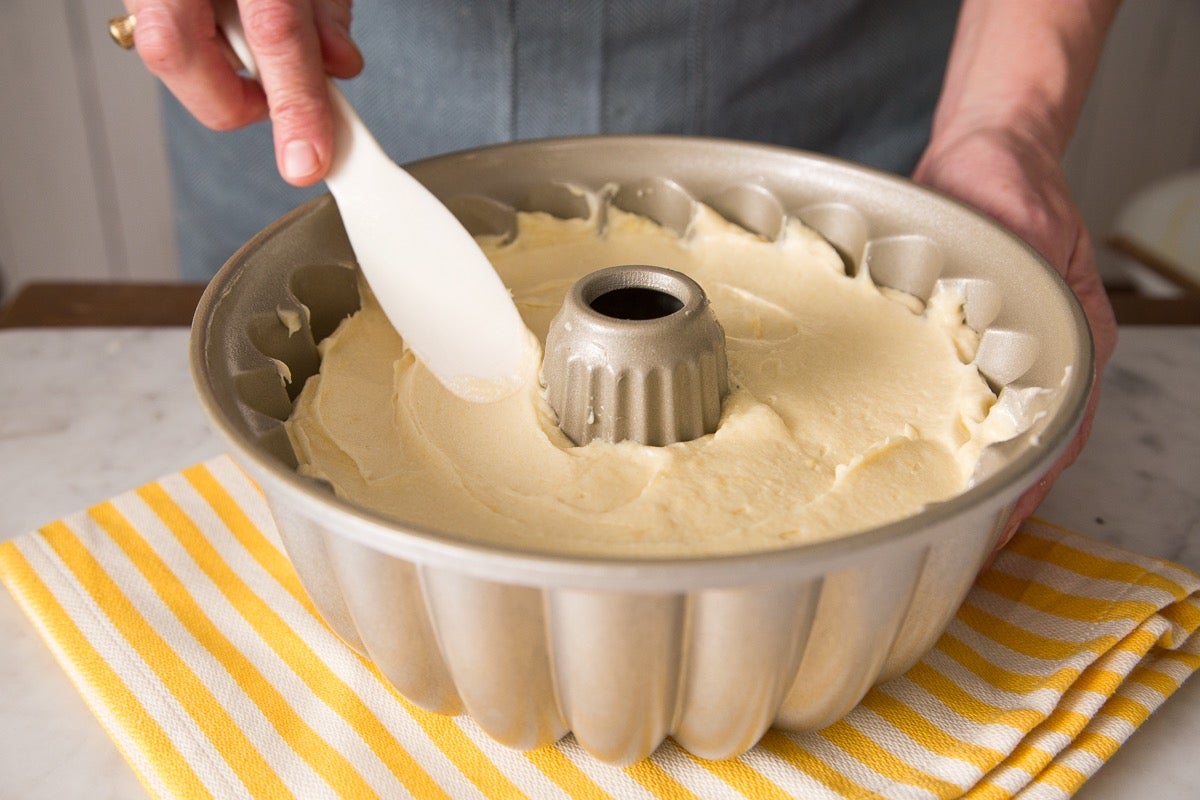
Spoon the batter into the prepared pan, leveling it and smoothing the top with a spatula.
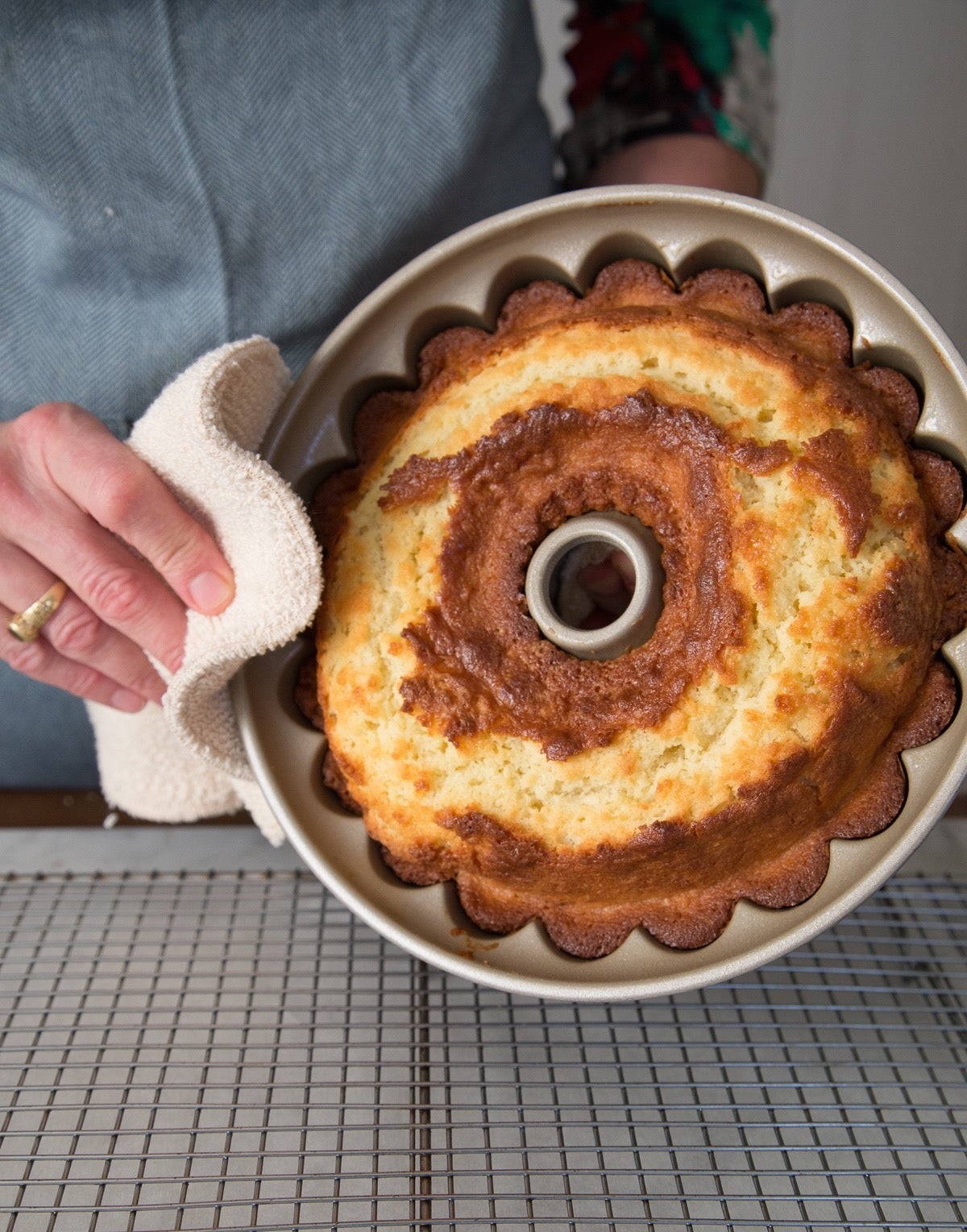
Bake the cake for 45 to 60 minutes, or until a cake tester or toothpick inserted into the center comes out clean. Tip: If you don't have a long enough toothpick to reach the center of the cake, use a piece of uncooked spaghetti. A pan with a dark interior will bake cake more quickly; start checking at 40 minutes. A cake baked with gluten-free Measure for Measure flour will bake a bit more slowly; give it the full 60 minutes.
While the cake is baking, make the glaze:
1/3 cup (74g) freshly squeezed lemon juice, the juice of about 1 1/2 juicy lemons
3/4 cup (149g) granulated sugar
Stir together the lemon juice and sugar. Microwave or heat over a burner briefly, stirring to dissolve the sugar. You don’t want to cook the lemon juice, so microwave just until very warm, but not uncomfortably hot — less than 1 minute should do it. Set the glaze aside.
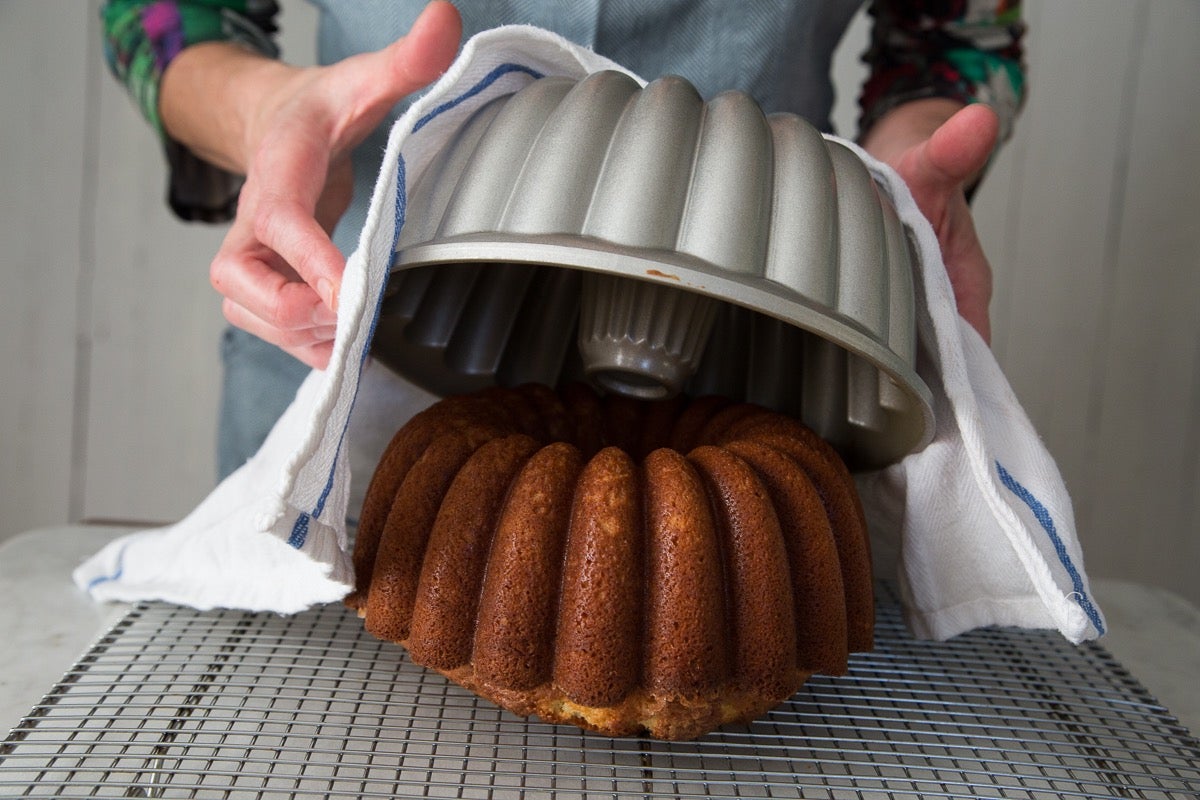
Remove the cake from the oven, and carefully run a knife between cake and pan all around the edge. Place the pan upside down on a cooling rack. If the cake drops out of the pan onto the rack, remove the pan. If the cake doesn’t drop onto the rack, let it rest for 5 minutes, then carefully lift the pan off the cake. But if the cake still feels like it's sticking, give it another 5 minutes upside down, then very gently shake the pan back and forth to loosen and remove it.
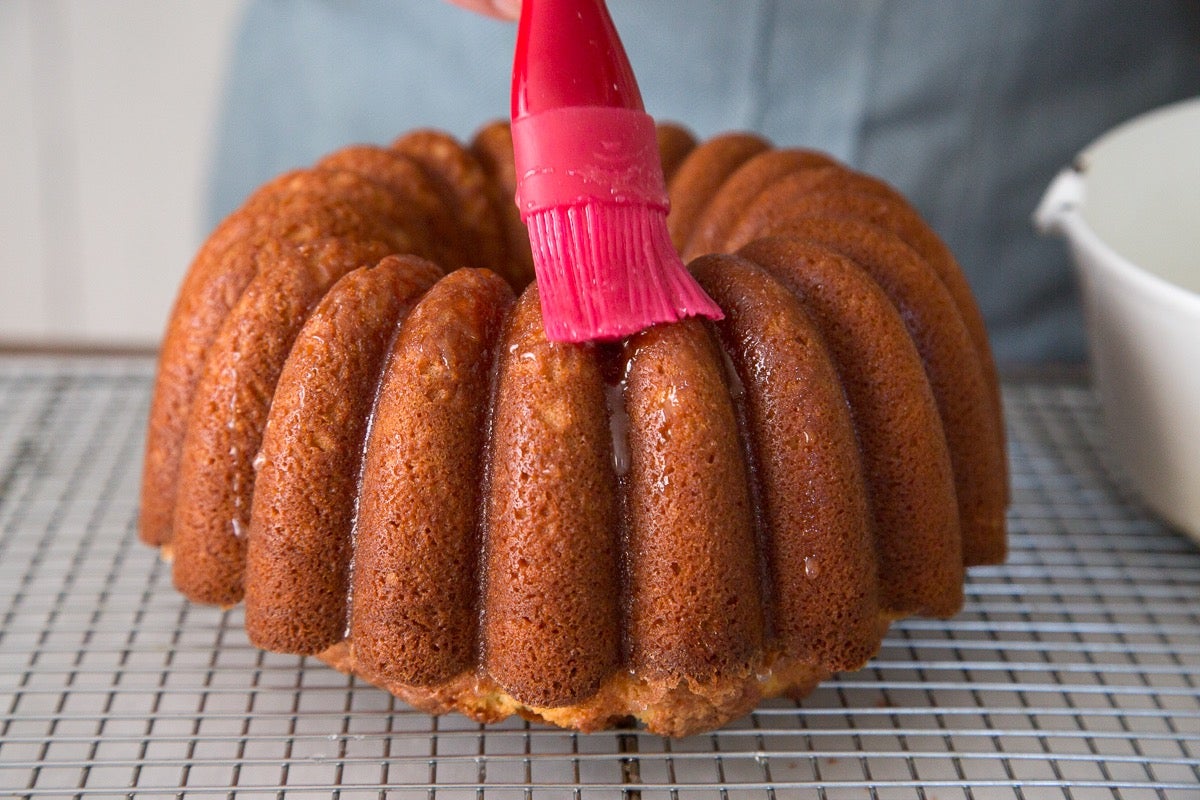
Brush the glaze all over the hot cake, both top and sides. Let it sink in, then brush on more glaze, continuing until all the glaze is used up.
Allow the cake to cool completely before icing and serving.
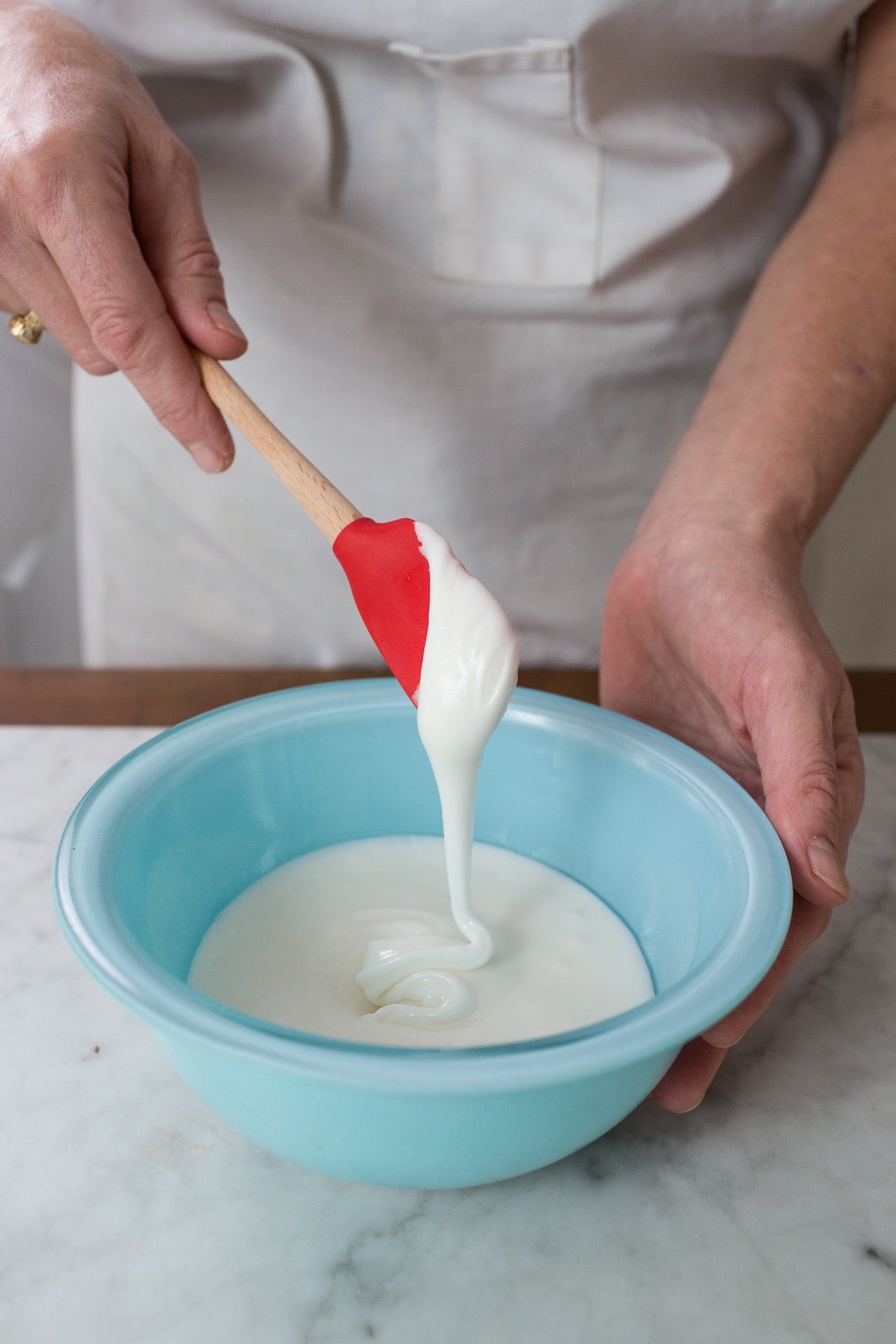
To make the icing:
1 1/2 cups (170g) confectioners' sugar, sifted
pinch of salt
2 to 3 tablespoons (28g to 43g) freshly squeezed lemon juice
Mix the sugar and salt, then mix in 2 tablespoons of the lemon juice, adding just enough additional juice to create a thick glaze, one that's just barely pourable.

Drizzle it artfully over the completely cool cake.
You can store the cake, well wrapped, at room temperature for several days. Freeze for longer storage.
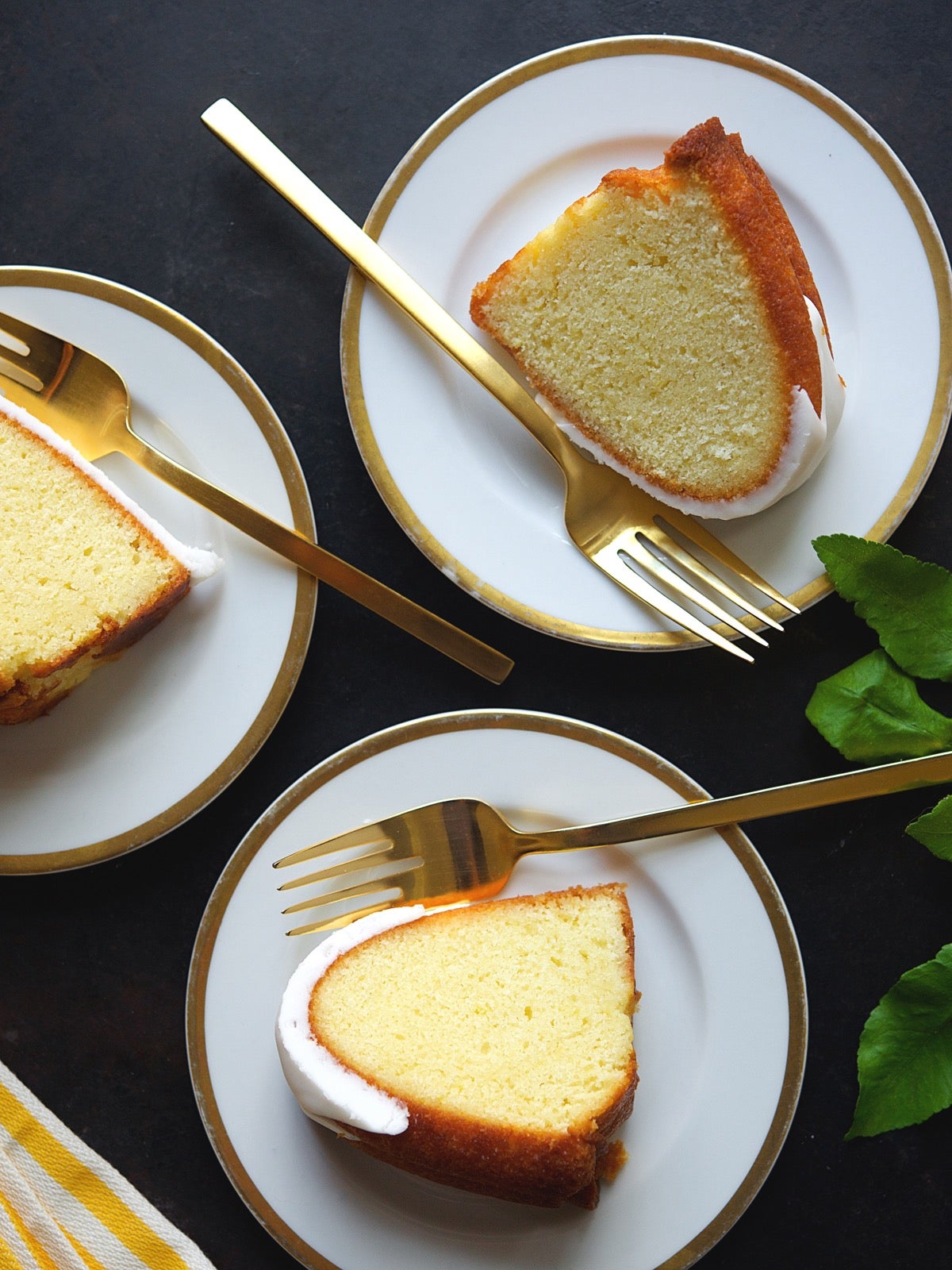
Does cake get any better than this?
Maybe! Join us next month for one of our favorite chocolate Bundt cakes — just in time for Valentine's Day.
Want to make this cake gluten-free? Our Gluten-Free Measure for Measure Flour makes it easy to make many of your favorite traditional recipes (like this one) gluten-free. Simply substitute Measure for Measure flour 1:1 for the flour in this recipe; no additional ingredients or other changes are necessary.
If you're up in the mountains, you may want to adjust this recipe for optimal results. See our high-altitude baking tips.
Thanks to fellow employee-owner Julia Reed for the baking photos in this post.
For all of our Recipe of the Year posts through the years, check out our blog post collection.

